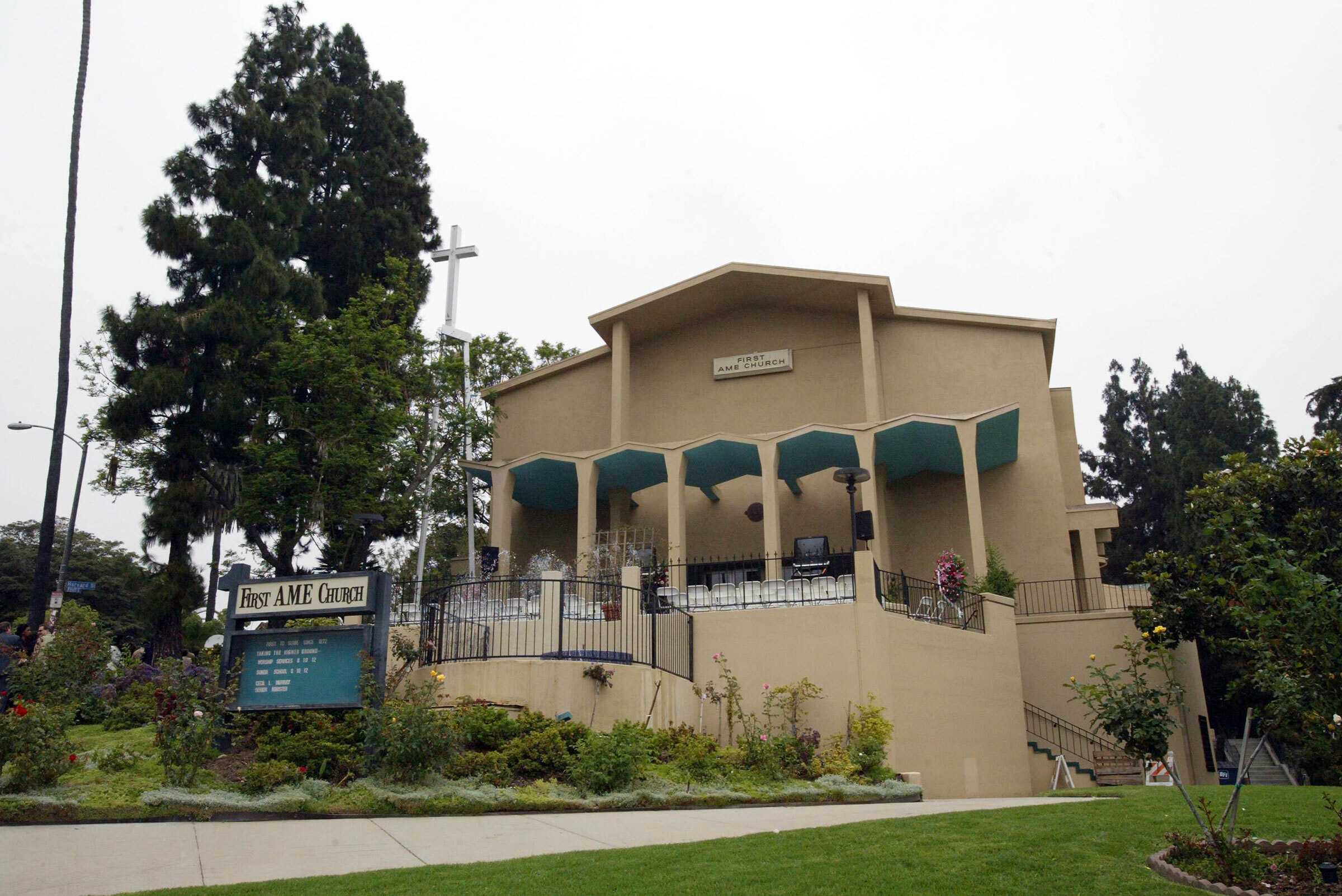Westward Expansion and Freedom of Expression
Congregation on the steps of the First African Methodist Episcopal Church of Los Angeles on Azusa Street, 1888–1903
Bridget “Biddy” Mason (1818–1891) helped found the First African Methodist Episcopal Church of Los Angeles (FAME) in 1872. Enslaved in Mississippi, Mason had traveled with her enslaver to California in 1851 and won a landmark court case to gain freedom for herself and her daughters. With money she had earned as a nurse and midwife, Mason invested in property and amassed a sizeable fortune. Initially, church members gathered in her home, but with her savings, she helped purchase a church building in 1888 on Azusa Street.
FAME grew with the African American community during the late 19th century as migrants moved west in search of better economic opportunities and freedom from the racially oppressive conditions of the South. The magnificent church buildings, which have symbolized the financial prosperity of many congregation members, have been places of refuge from racial discrimination and of freedom to express an African American style of worship.
Building A Community
Members of the First African Methodist Episcopal Church of Los Angeles worshipped at their building on Azusa Street for 15 years (1888–1903). During this time, its founder—formerly enslaved Bridget “Biddy” Mason—passed away at age 73. The Church, however, continued to grow. In 1901, Pastor Jarrett E. Edwards commissioned a new building designed in the Gothic style. Twelve years after Mason’s death, the congregation moved to the historic building at 8th and Towne Avenue, where they worshipped for 66 more years (1903–1969).
First African Methodist Episcopal Church of Los Angeles at 8th and Towne Avenue, 1960s
Pastor Jarrett Edwards commissioned the Gothic style building at 8th and Towne Avenue.
Praise and Worship
The Church developed a mass choir with musicians, a cadre of dedicated ushers and altar boys, and dutiful acolytes. It also played a major role in the social, political, and spiritual lives of African Americans in Los Angeles. Its activist ministry promoted civil rights and community development while its congregation of many leading residents embodied the aspirations of those who had come West seeking freedom and opportunity.
Leadership and Visibility
First AME Church cornerstone laying ceremony, 1968
Pastor’s chair from the First African Methodist Episcopal Church of Los Angeles, ca. 1969
A group of ushers during the 100th Anniversary of the First African Methodist Episcopal Church of Los Angeles
In 1968, members of the First African Methodist Episcopal Church of Los Angeles (FAME) gathered to lay the cornerstone for their new building at South Harvard Boulevard. Present at the ceremony was FAME member and architect Paul R. Williams (1894–1980), who had designed the building in 1963. The congregation moved into the Late Modern style structure in 1969 and celebrated its 100th anniversary at that location. South Harvard Boulevard is the present-day home of the Church, where pastors and congregants have advocated for political representation, economic development, and social justice. Through their ties with organizations like the NAACP, community leaders who are members of FAME have engaged the Church in social activism and have empowered the African American community in Los Angeles. These Civil Rights activities have established FAME as a highly visible forum to discuss local and national issues and a critical stop on the campaign trail for candidates seeking support.
